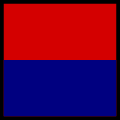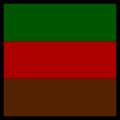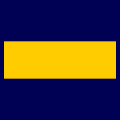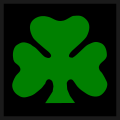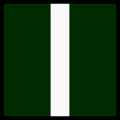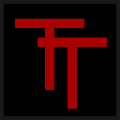
A tactical recognition flash (TRF) is a coloured patch worn on the right arm of combat clothing by members of the British Army, [1] Royal Navy and Royal Air Force. A TRF serves to quickly identify the regiment or corps of the wearer, in the absence of a cap badge. It is similar to, but distinct from, the DZ Flashes worn by members of Airborne Forces.
Contents
- Army
- Royal Armoured Corps
- Army Air Corps
- Infantry
- Adjutant General's Corps
- Overseas Forces
- Historic
- Royal Air Force
- Cadet Forces
- See also
- References
TRFs should not be confused with formation signs or insignia, which are used to denote the formation (usually brigade or division or a higher headquarters) and are worn in addition to TRFs by a member of any regiment or corps serving in that formation.

